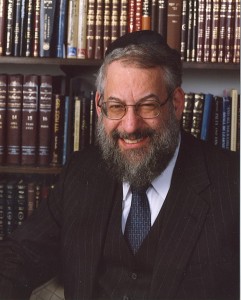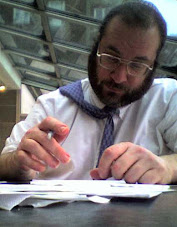February 11, 2010
Dear Friends,
It is my great pleasure to introduce you to the new Kalsman Institute Assistant Director,Adi Bodenstein. Having recently graduated from the University of Michigan with a masters degree in Social Work, Adi returned to her hometown of Los Angeles with expertise in areas such as leadership, communication, community building, research, and fundraising.
Prior to joining Kalsman, Adi worked with several well known social service organizations whose focus is also on health and healing, including the Crohn’s and Colitis Foundation, the March of Dimes, and Take Back the Night.
With a passion for growing non-profit organizations and creating new ways to strengthen them, Adi (pronounced add-ee, like Annie) will be of great assistance in the growth of the Institute. Please welcome her at 213-765-2131 or abodenstein@huc.edu. I am extremely grateful to Rachel Sisk, MSW, MAJCS, who worked as interim project manager for Kalsman through January. Rachel skillfully helped with our ever-growing list of projects, while bringing a strategic eye to our long-term planning.
Kalsman’s efforts are currently focused on:
- ASSAF
- Research Roundtable (Templeton)
- Consulting Projects
- 2010 Events
ASSAF: JUDAISM, HEALTH AND HEALING FOR CLINICIANS
A new group of healthcare clinicians began the ASSAF program earlier this month with an opening retreat in Phoenix, and are now engaged in chevruta study on texts and materials related to Judaism, health and healing. The ten-week program is designed to help these practitioners learn more about Jewish sources, and learn how to use this experience to strengthen the connection between their personal and professional lives. They hope to fight burnout and reconnect to the meaning of their work and commitments. It is a privilege for me and my partner Howard Silverman, M.D. to watch the immediate bonding and camaraderie of this second ASSAF group. Many thanks to Kalsman intern, Courtney Jacobson, from HUC’s School of Jewish Communal Service, for her work on this project, with Phoenix’s Temple Chai staff Sharona Silverman and Rabbi Mari Chernow.
KALSMAN ROUNDTABLE ON JUDAISM AND HEALTH RESEARCH
Growing and professionalizing the work of the Jewish healing movement is an increasingly important goal of the Kalsman Institute. We were awarded a grant by the John Templeton Foundation to help develop a scholarly foundation for the field of Judaism, health and healing. Advisors are assisting the development of a Research Roundtable whose members will gather in 2011 to help set priorities and an agenda for this work.
Advisors include:
· Jeff Levin, Director, University Professor of Epidemiology and Population Health
Professor of Medical Humanities, Director, Program on Religion and Population Health (PRPH), Baylor University (Scientific chair of Kalsman’s Research Roundtable)
· Kenneth I. Pargament, Ph.D., Professor of Clinical Psychology, Bowling Green State University
· Rabbi Richard F. Address, D.Min., D.D., Director, Department of Jewish Family Concerns, Union for Reform Judaism
· Steven M. Cohen, Ph.D., Research Professor of Jewish Social Policy, HUC-JIR
The advisors met last weekend in Southern California. In addition to identifying research priorities and creating a professional community of scholars, scientists, and practitioners who will research the interconnections of Judaism and health, four outcomes are in the works as a result of this project:
1. A national program assessment, providing an overview of projects and offerings from congregations, healthcare settings, and other institutions
2. A literature review of the field, resulting in a searchable online archive
3. An initial survey on health and the Jewish population
4. Ongoing publication of journal articles and other scholarly writing projects.
CONSULTING PROJECTS
The Kalsman Institute continues our work as a matchmaker, convener, and consultant for others in the field of Judaism, health and healing. Several congregations are strengthening bikur cholim efforts, engaging healthcare professionals, or creating healing centers, and we have been privileged to provide resources and networks for assistance. The Institute is also working with Cedars Sinai Medical Center to provide a complete assessment of the hospital’s Chaplaincy Program.
 SOCIETY FOR JEWISH ETHICS (ACJB SJE)
SOCIETY FOR JEWISH ETHICS (ACJB SJE)
The Academic Coalition of Jewish Bioethics (ACJB) completed a strategic decision to become a Working Group of the Society of Jewish Ethics (SJE), which meets annually in January. Highlights of the most recent gathering, Jan. 7-10, in San Jose, CA, included papers on empathy, shame, and gender roles. More information is available atwww.societyofjewishethics.org.
MIDRASH & MEDICINE
We have very exciting news: Jewish Lights Publishing will publish Midrash and Medicine:Healing Body and Soul in the Jewish Interpretive Tradition, due out in Spring, 2011. Bill Cutter is the editor and he is crafting the contents, which include materials from the Midrash & Medicine conference in Monterrey in May 2009.
FUTURE OFFERINGS
I invite your collaboration while the Kalsman Institute is in the process of planning programs and events for 2011 - 2013.
- Regional Kalsman one-day gatherings – we will explore partnering with institutions such as the NAJC, NCJH, congregations, and the URJ
- A major conferences, following on the successes of “Mining the Jewish Tradition” and “Midrash & Medicine”
- Maintaining and building our international health & healing connections, including those in Israel and South America
FINAL NOTES – PLEASE PARTICIPATE
Mayyim Hayyim Community Mikveh and Education Center is hosting the international Mikveh Conference, “Gathering the Waters International Mikveh” conference to be held in Boston, October 10-12, 2010. The conference will provide an in-depth exploration of the contemporary mikveh in theory and practice. Internationally renowned scholars, clergy, and educators will teach about immersion as a powerful tool for spiritual renewal, marking life transitions, and observing mitzvot. www.mayyimhayyim.org
8th North American Chevra Kadisha and Jewish Cemetery Conference
Atlanta, GA - Marriott Perimeter Center - June 6-8, 2010
Advance registration deadline extended until February 15, 2010. Co-sponsored by Kavod v’Nichum and the Jewish Cemetery Association of North America (JCANA).http://www.jewish-funerals.org/conference/conferencecontents.htm
Hiddur
Addressing the Spiritual Journey of Jews Beyond Midlife was held on November 19, 2009, in New York City. Click to listen to clips of the presentations and link to a conference toolkit:www.rrc.edu/spiritualjourney
Current Research: Gratitude, Religion and Health among Jews and Christians
A new study investigates the relevance of religious and non-religious gratitude to mental and physical well-being and distress among Jews and Christians. Researchers are looking for non-Orthodox Jewish individuals, 18 years of age and older, to complete a 20 minute online survey. Click here: http://www.jpsych.com/gratitude/consent.php . The JPSYCH website is an online laboratory to investigate the role of Jewish religiousness in psychological wellbeing.
IN CLOSING
In these times when we continue to hone our ability to live with good and evil in the world – I send you blessings of health and community. A Kalsman colleague is recovering from recent surgery, and as I return to agility, strength and balance (after my broken ankle, cast, and crutches for two months), I hope this creative English interpretation of the asher yatzerprayer from Rabbi Ruth Adar resonates with you.
Asher Yatzar (“Who brought forth”)
Thank God it all works!
No.
Thank God enough works.
For all our science, and all our technology,
These bodies You have made in Your wisdom are wrapped in mystery:
Rooms within rooms, openings and closings,
All work so wonderfully
That we only notice when they don’t.
We are able to stand or sit before You, our Creator,
Because enough works today.
Blessed are You, Eternal our God,
Ruler of Time and Space,
Who heals our flesh and continues doing wonders.
Interpretation by Rabbi Ruth Adar
My warmest regards,
Michele
_______________________________________________
Michele F. Prince, LCSW, MAJCS
Director, Kalsman Institute on Judaism and Health
Hebrew Union College – Jewish Institute of Religion
3077 University Avenue
Los Angeles, CA 90007
213-765-2149 - telephone
213-749-1192 - facsimile
mprince@huc.edu
www.huc.edu/kalsman







